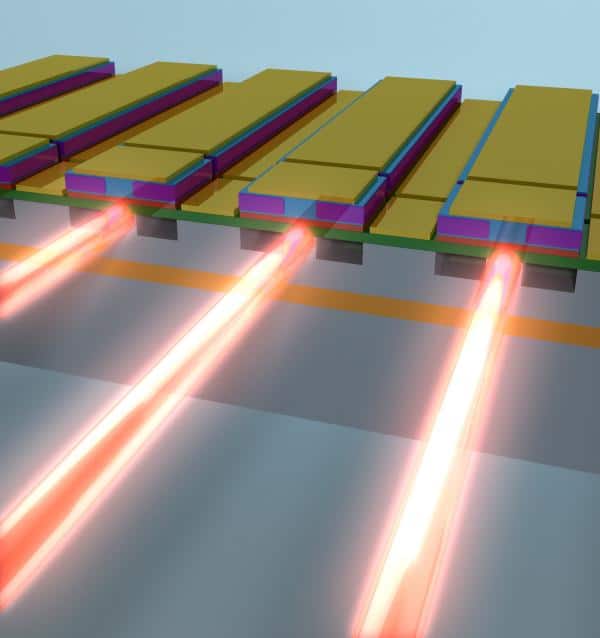A new optical system in which light is produced by a laser and transmitted by silicon could lead to innovative developments in the various fields of electronics, from medical diagnosis to advanced sensors

A new optical system in which light is produced by a laser and transmitted by silicon could lead to innovative developments in the various fields of electronics, from medical diagnosis to advanced sensors.
Despite the many advantages of metals in transferring information from one electrical circuit to another because of silicon found inside computers and other electronic devices, electrical engineers from Duke University claim that optical signals may transmit a larger volume of information. Following this, the engineers designed and demonstrated the operation of microscopic lasers integrated within thin layers of silicon-based light conductors that could in the future replace the metal copper in a variety of electronic products.
Not only do the silicon structures contain tiny light-emitting lasers, but they also connect these lasers to channels that precisely guide the emitted light to its target, usually a chip or other nearby electronic component. This innovative approach could help those engineers who are interested in developing faster and smaller computers and electrical devices using light as the information carrier of the next generation.
The engineers believe that they have succeeded in solving some of the puzzles that were open to the scientists who tried to produce and control light on this tiny scale.
"Generating light and passing it through silicon in a controlled manner are the first steps towards developing optical systems the size of the chip world," said Sabarni Palit, a researcher in the Department of Electrical and Computer Engineering at Duke University. The findings of the research, which received assistance from the Ministry of Military Research, were published in the scientific journal Optics Letters.
"The challenge was the production of light on this small scale on silicon, and the guarantee that it is transmitted efficiently and without energy loss to the next component," said the researcher. "We found a way to produce a structure of a thin sheath integrated with the silicon that not only contains the light source and can be cooled, but is also able to precisely conduct the wave to the next component in line," explains the researcher. "This combination is a necessary approach for any light-based system on a microscopic scale."
The research team was able to develop a method to prepare a thin laser substrate, and connect it to a silicon surface. The lasers are connected to other structures by placing a microscopic layer of polymer that covers one end of the laser and continues into a channel leading to the adjacent components. Each layer of the laser and each light-conducting channel are given unique characteristics, or functions, through special nano- and micro-manufacturing processes and through the selective removal of parts of the substrate by suitable chemicals.
"During the production of the laser, heat is generated, which may damage the efficiency of the operation and even the disintegration of the laser over time," explains the researcher. "We discovered that inserting a thin strip of metals between the laser layer and the silicon layer leads to the dispersion of the generated heat and enables a longer lifetime of the lasers."
The ability to use light on a microscopic scale is an exciting thing," says the researcher. "However, it is necessary that the energy supplied to these systems be small, so that they can be portable, and also cheap to produce. These systems can be used in electronic devices, in medical diagnosis and in sensing the environment."
